For a few years now, going to museums has been one of my favourite things to do. Whenever I’m travelling, I feel it’s the best way to get to know the city or country I’m visiting. This goes for both art and history museums. It’s a great thing to do whenever you are tired of walking outside, if the weather is not that good, or if you want to spend some time enjoying your own company or having interesting conversations with others. Whenever I’m back home, I like going to museums because they feel like a little vacation to me. It’s as if day-to-day life was halted for a few hours when I can treat myself to a little break. After living here for a semester, Uppsala already feels like home to me, which means it’s time to think about where to go for a little in-city vacation.
Sweden has many incredible museums, most of them in Stockholm. Over the last semester, I’ve visited the National Museum (Nationalmuseet) and the Vasa Museum (Vasamuseet), which is probably one of the most impressive historical museums I’ve ever visited. However, visiting museums in Stockholm involves two extra costs: transportation and TICKETS. Yes, all the museums I’ve visited in Stockholm had quite pricy entrance tickets, even for youth and students :’(
But if you are a museum enthusiast like me living in Uppsala or thinking about moving here, don’t get your hopes down just yet! Over the last months, I’ve discovered some fascinating museums in Uppsala. In this text, I want to talk a bit more about two of them, both of which are free: the Bror Hjorths Hus and the Uppsala Konstmuseum. They are both free, close to the city centre and have really interesting art from Sweden and other neighbouring countries.
1. BROR HJORTHS HUS
Where? Norbyvägen 26, Uppsala
When? Thursday-Sunday from 12h to 16h
How much? FREE ENTRANCE
Bror Hjorth was a famous Swedish artist known mostly for his sculptures but also for producing many paintings. Although he was born in the Northern part of the Upland region, Bror Hjorth settled in Uppsala, where he built his atelier and lived the last years of his life. His work can be found all around Sweden, in some of its most important museums, but also in public monuments, buildings, and churches, among other sites. After his death in 1968, his house and atelier were converted into a museum, opened in 1978, which was later expanded to include another area for temporary exhibits.
Out of the two museums I’m talking about in this post, this was for sure my favourite! Bror Hjorth has a very unique style, mixing techniques, materials, colours or the lack thereof. I specifically liked the human figure sculptures and the large colourful panels he made for various churches around Sweden. Although I’m not the biggest fan of religious art, I think his simple but distinctive representations of people, using very vibrant colours, made for a much-needed relief in the middle of the cold grey and white Swedish winter.
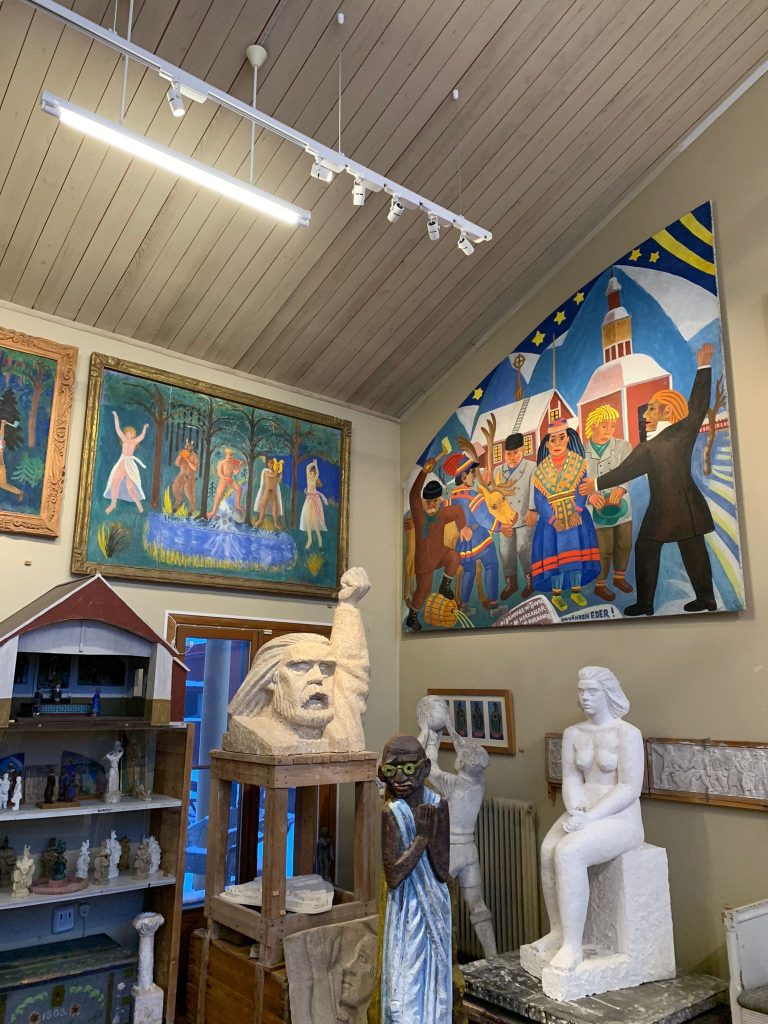
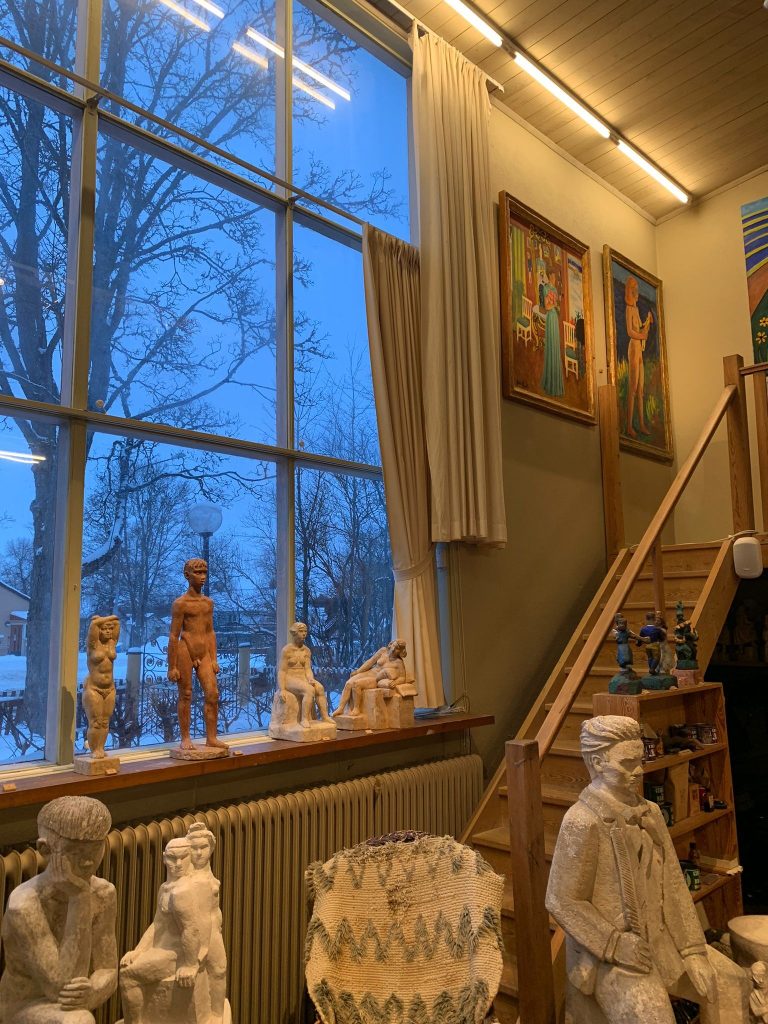
In addition to getting to see Bror Hjorth’s own work and visit his house and atelier, the museum also hosts temporary exhibitions. When I went there, it was the opening of a photography exhibit. It showed very Swedish themes set in very different parts of the country and under drastically different weather conditions. It was interesting to see the difference in aesthetics between a cold winter night up North in Kiruna and a hot summer day in the suburbs of Stockholm. The additional exhibition was also free and I’d say it’s always a good idea to keep an eye out for when they are opening a new exhibit. You might be lucky enough to get some cookies, candy, and drinks for free 😉
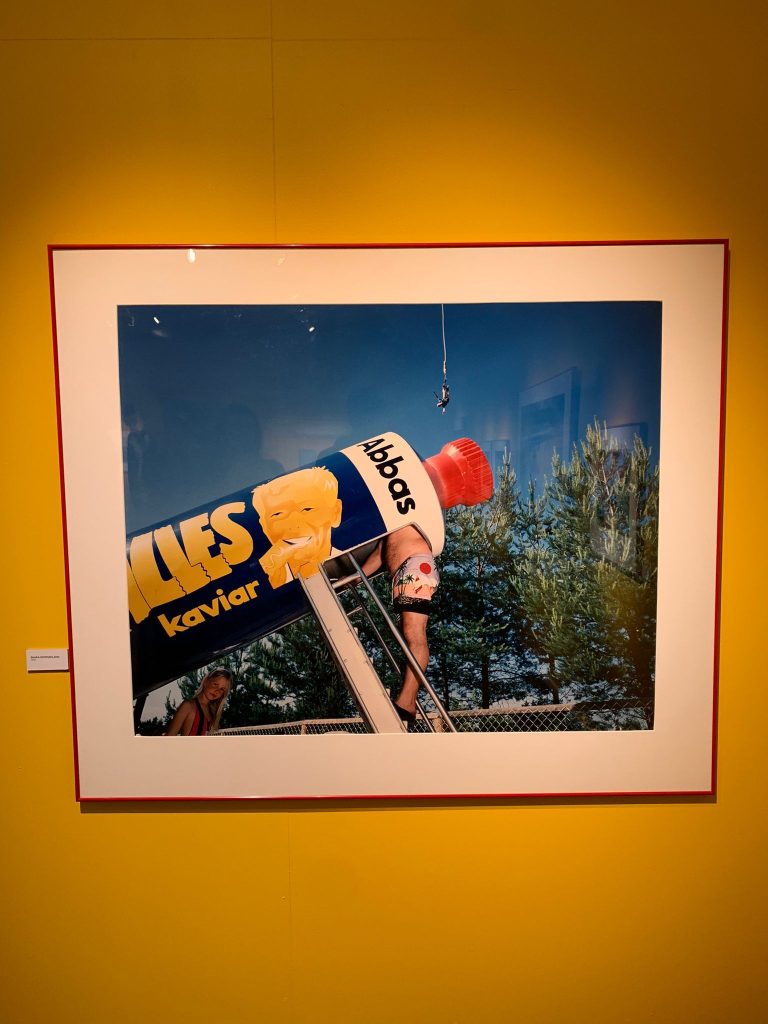
Uppsala Konstmuseum
Where? Drottning Christinas väg 1E, Uppsala (inside the Castle)
When? Tue-Wed 11-17h; Thu 11-20h; Fri-Sun 11-17h
How much? FREE ENTRANCE
The second museum I visited in Uppsala was the Uppsala Konstmuseum (Uppsala Art Museum). It is located in a very privileged position: inside Uppsala Slottet (the Castle), one of the landmarks of the city. Sitting atop the highest hill in the city, going to this museum also ensures you’ll get some amazing views of the city centre and the countryside surrounding it. Visiting the Castle itself and enjoying the views would already be enough to convince anyone to take the walk there, but the fact that it also hosts the Art Museum makes it an even better plan for in-city tourism.
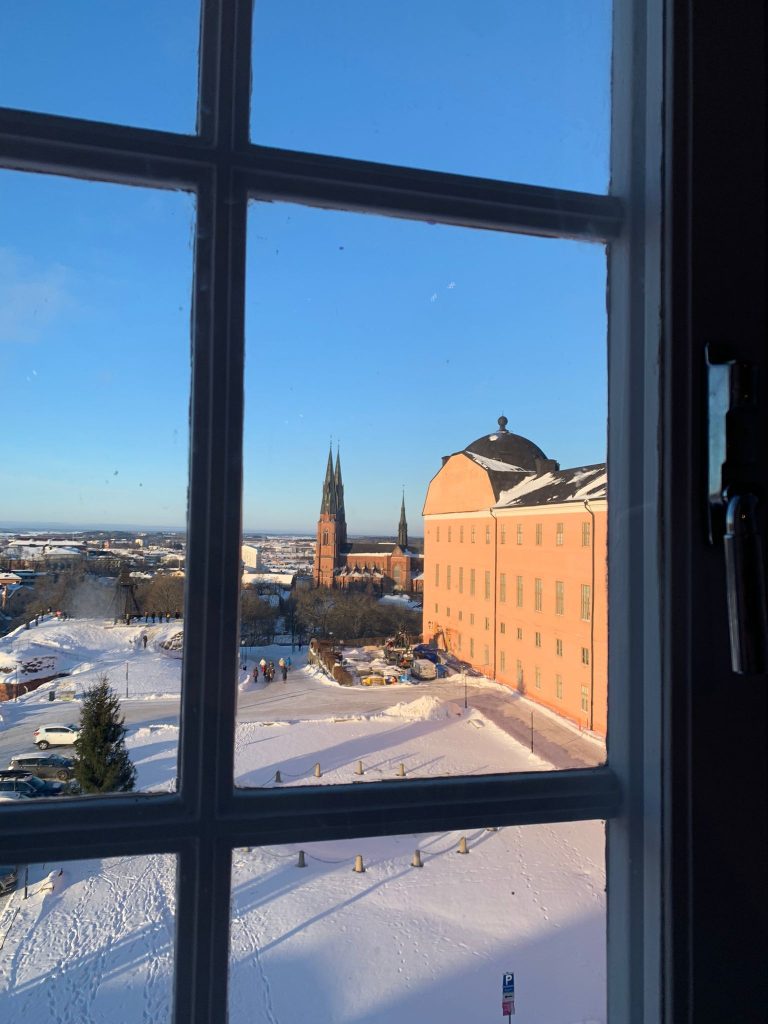
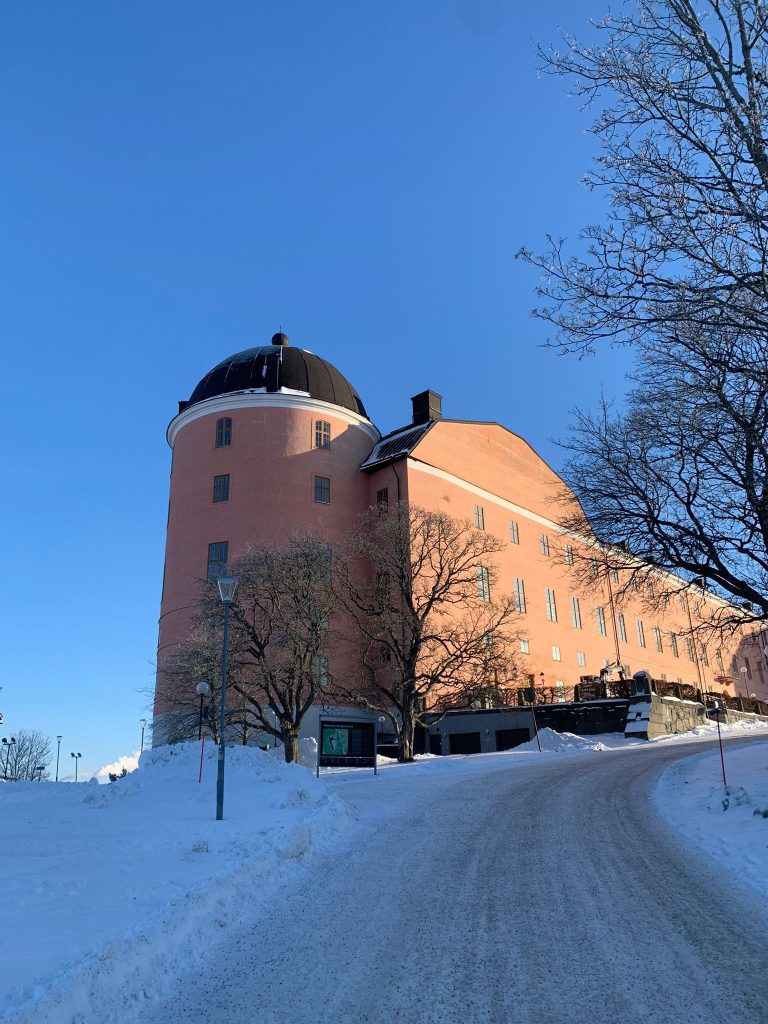
The museum is located in one of the corners of the Castle and beside the exhibits, it also has a Bar and Café, as well as a museum shop. I got to see pieces of the museum’s permanent collection, including mostly Swedish and Finnish artists. All pieces were curious in their own way, whether beautiful, intriguing, or disturbing, all of them got you thinking about something, which is after all the purpose of art. Unfortunately, when I visited it in January, one of the floors was closed, so I didn’t get to visit all of the permanent exhibits. However, I also heard that the curators are constantly rotating the pieces shown, so each visit is likely to be a unique experience.
The museum seems to be mostly focused on modern and contemporary art, with the temporary exhibits being located on the top floor. When I was there, there was one exhibit by Swedish painter Ingvil Stille which was super interesting. She combines very organic shapes relating to sunlight and shadows with deeply moving portraits, mostly of her family members. According to the program, she is not a lesser-known artist and that is the reason why she was recognized by the Upland’s Art Association as the Artist of the Year in 2023, leading to her work being presented in the Konstmuseum. I think it was a very well-deserved award, as I was very touched by her work and I was glad to see it in such a beautiful museum.
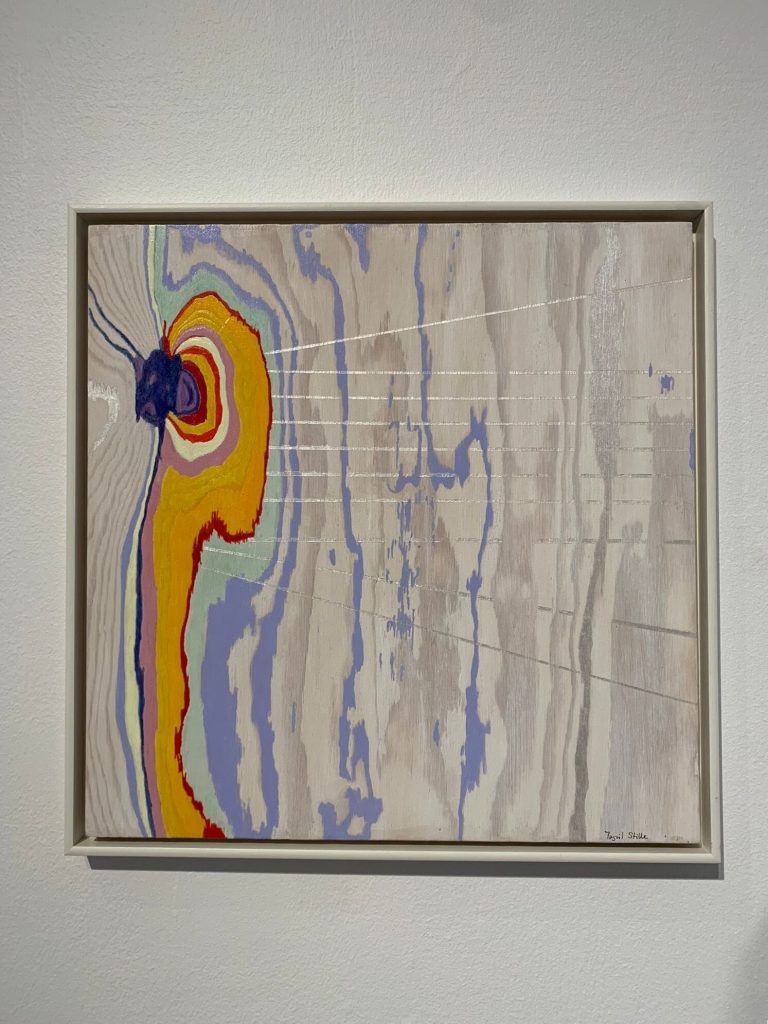
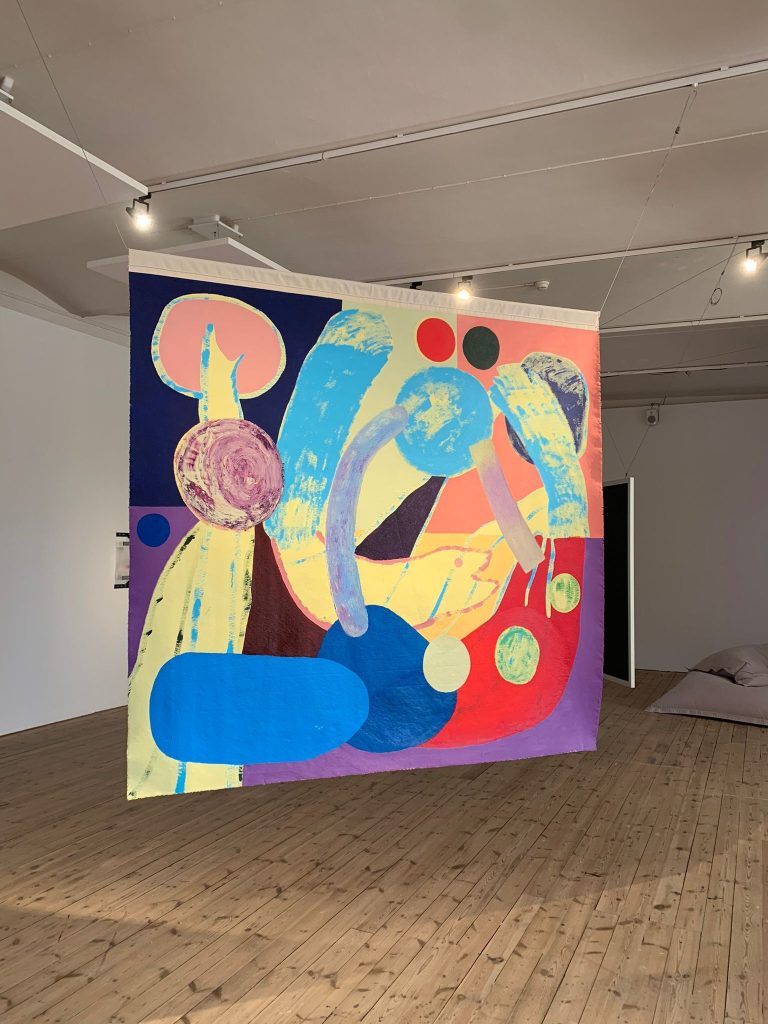
Finally, the remainder of the last floor included other modern and contemporary art pieces. It mixed videos, interactive pieces, as well as paintings in a very captivating way. Furthermore, it was from this floor that you have the best view of the areas around the Castle (see the picture of the Cathedral earlier ^^). Some pieces on this floor were more on the… provocative side of contemporary art, so to speak. Some of them included nudity and other themes which may be sensitive or triggering to some people. Everything is indicated before you enter specific rooms, but I’d advise people who are commonly affected by these themes to be aware of that.
To conclude, I highly recommend visiting both museums! They are unique and special in their own ways and can be a great program for a weekend day, either on your own or with company. Moreover, it’s always good to recognize and support free museums. Visiting them and showing that the community is interested in and engaged with these spaces helps politicians see that free cultural activities are essential for its citizens. As a final message: Support your local museums, support your local artists!

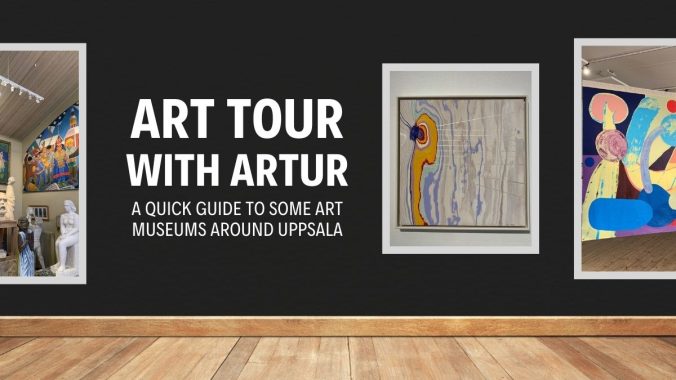
Leave a Reply